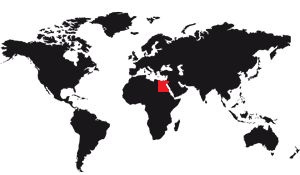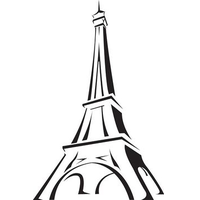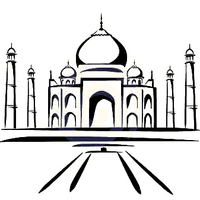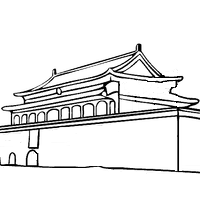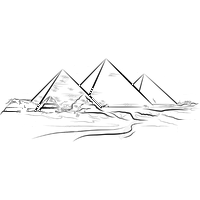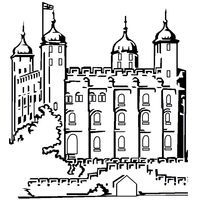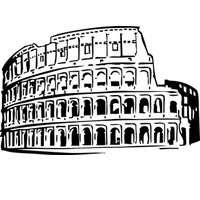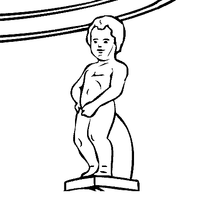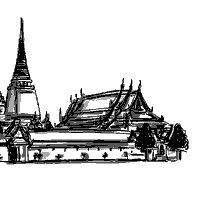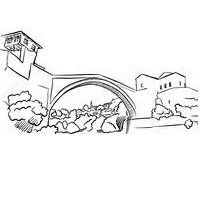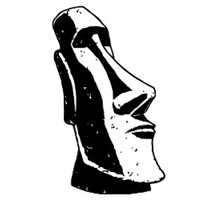With one million visitors a year, tourism plays an important, if not decisive, role in Egypt's trade balance. Of course, in the eyes of tourists, Egypt is first and foremost the land of the pharaohs. No wonder then that the main flow of visitors is focused on the Nile Valley and its temples. Ramses II, Seti I and the scribe no longer designate only famous rulers and statues. These names baptize floating palaces which continually make Luxor's ridge in Aswan and Aswan in Luxor. These ships, outside storey somewhat reminiscent gunboats Lord Kitchener, alongside the feluccas sail patched in a genre scene that offers his show daily on the sacred river. Inside these boats, pseudo Louis XV sofas, Pharaonic sinks, crystal chandeliers and gilded railings rather give a look of oriental casino each of these floating hotels. A tinsel that seems appropriate, it seems, to the customer, if one believes the diversity and the number of tourists and the rapid multiplication of these caravanserais of the river. There are about forty of these units that cross the Nile, engaging in fierce competition whose stake is assured by the 600 000 tourists who flock every year to visit the temples of ancient Egypt.
Visit periods
The period from October to January covers the ideal season to visit Egypt. However the tourist should not forget that this is a relatively cold period. He will take care of bringing woolen clothes that the freshness of the evening will make indispensable.
We can spend a summer vacation in Egypt, provided we observe some basic precautions.
It is first recommended to avoid dehydration. To do this, you should often drink soft drinks and tea. Absorbing sodium and potassium is also effective.
We will also be wary of the heat of the middle of the day. The departure on the excursion will be at dawn, and we will reserve the afternoon at nap or at the swimming pool. Also take into account the temperature changes when leaving an air-conditioned environment for the torrid exterior. Similarly, in the evening, the thermometer drops significantly, so it is recommended to cover warmly.
Archaeological tourism
The craze for this archaeological tourism dates back to the time of the English. You can still see in Aswan the colonial palace where the European elite was meeting for the new year. Today, this hotel with rattan furniture and precious woodwork, dozing in its old-fashioned charm, adjoins a modern palace with air conditioning and swimming pool where tourists dream of the luxury of the stars.
For now, in Egypt, mass tourism is wreaking havoc. The organized towers dig each day a little more the gap between the haves and the poorest. And Egypt is trying to drain this healthy flow of currency.
Surprisingly, archaeological tourism is only part of the country's overall tourism. In recent decades, Egypt has been focusing its efforts on sea and sun lovers. Tanning, swimming, underwater fishing are assets that the Egyptian coast has in abundance. On the Mediterranean coast, Aboukir is considered the best place for fishing, has sports clubs and organizes horse races in summer. In Alexandria, the development of a cornice opened to the public about thirty kilometers of beaches. And Marsa-Matrouh, we quickly forget that we are backed by the desert when we think that here came to bathe Queen Cleopatra. The Red Sea coast, where the Arabian desert dives into the water, offers a true paradise of 1,200 km for lovers of underwater and fishing. In Hourghada and Safaga, the development poles of this coast contrast with the fishing villages, the palaces of concrete that spring from the nothingness along the beaches.
Treks
This tourist "invasion" has directed some of the clientele towards visits requiring a personal effort. Thus was born the trekking in the oases of the Libyan desert. Difficult but remarkable routes cross the rocky and sandy landscapes around the oases of Bahnya (where springs hot springs) and Sionah. The sons of the fellahs are guides and gradually conquer the most arid areas of Nubia and the Libyan desert to a new-look tourism.
But the paradise of Egyptian trekking is Sinai. Fans who do not fear the sun or the thirst know that they can find in this mountain range the spaces, the wildness of the landscapes and that touch of mystical exoticism which belongs to this mountain where Moses received from Jehovah the Tables of the Law. Locked in a convent-fortress at the foot of the holy mountain, the monks of the Orthodox monastery of St. Catherine have made it a rule to host the visitor as long as it arrives before sunset. The hermits of St. Catherine's Monastery, founded in 527, succeed to Greek anchorites who, from the fourth century, came to seek solitude and meditation in this retreat. Peaceful conquest of a mountainous desert that prefigures the new conquest of Sinai. With the industrial development of this peninsula that Egypt projects, is added a wonderful plan of tourist enhancement aiming for about 60 000 square kilometers of desert. Of the three hundred million dollars that must be invested for the transformation of the country, thirty-five million are destined for the peninsula and especially for tourism.
Tourist Complexes
This second wind plans to bring out from the desert holiday clubs, hotels built on the Gulf of Aqaba. Two thousand apartments by the sea, which must complement the facilities inherited from the Israelis in el-Arich on the Mediterranean shore. This project is based on a huge development plan that combines the development of palm groves and the commissioning of a thermal power plant, water catchment and the diversion of an arm of the Nile. Already, this derivation is in progress. And soon the As-Salam canal will bring an arm of the Nile Delta, from Damietta to Sinai.
For road links, the Ahmed-Hamdy tunnel, dug 37 meters deep under the Suez Canal and inaugurated in 1980, symbolizes the attachment of the peninsula to the rest of the Egyptian homeland. As for the Bedouins of Sinai, 120,000 people, just settled, here they have become the settlers of this new world. Become dive instructors or windsurf instructors, these desert men are transformed into "Beach Bedouins" of a "Sinai". In Egypt, tourism is undergoing profound changes.




